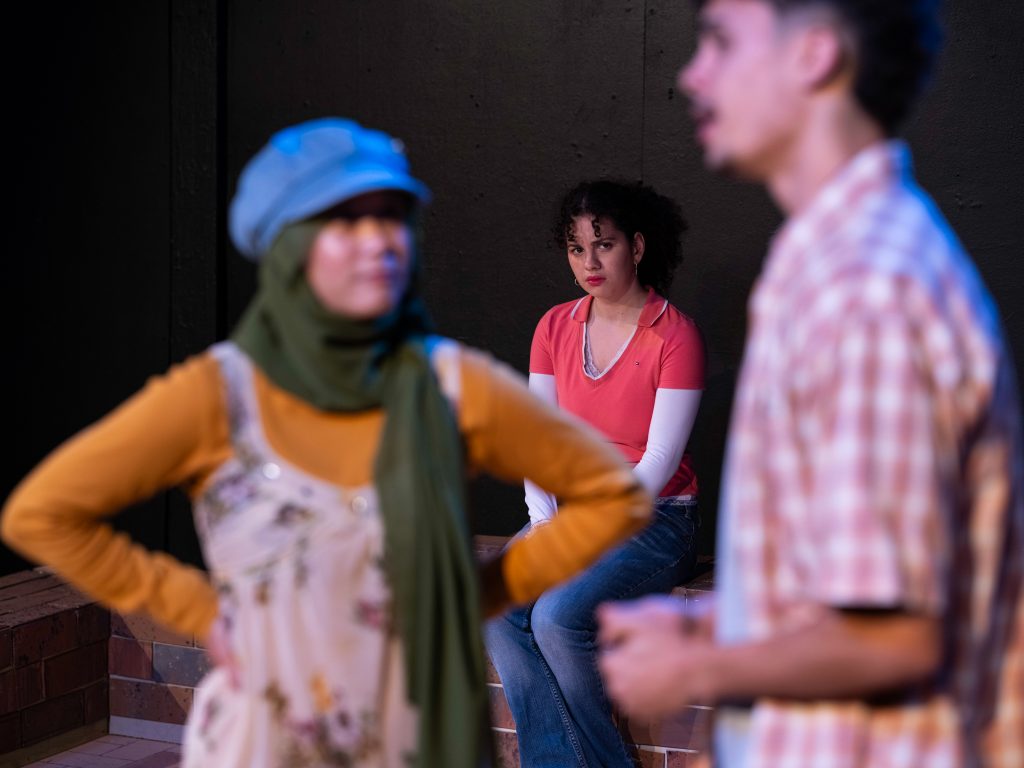“The story may be in the eye of the beholder, but it is also in the eye of the story-holder,” writes Valerie Chidiac.
“When a marginalised person writes, it is not art.
When a marginalised person writes, it is ethnography.
When a marginalised person writes, it is “truth-telling.” It is “bearing witness.”
When a marginalised person writes, their writing is asked to bear a load it cannot see or witness: its invalidation as art.”
- Declan Fry, “Killing the cop in your head” for Inside Story (2021)
I have heard from at least two working artists that now it is easier to get into the industry if you are from another cultural background or identify as part of a specific label or category.
On the one hand, it is easy, if not convenient, to confuse initiatives aimed at correcting disadvantage by giving marginalised groups access to the same opportunities as the average white person.
As Fry suggests above, when a marginalised person writes or tells stories, it is no longer considered art due to the weight imposed upon it. It becomes representative of an entire collective. It is personal. It is political. It is making up for decades and centuries of historical oppression. Therefore, you accept the opportunity and are grateful.
Storywashing or storyholder?
Recently, I attended the Our Stories, Our Dignity: an evening of Antiracism through hearts, stories and community by Our Race Community at the Marrickville Library Pavilion and was funded by the Inner West Council as part of International Day for the Elimination of Racial Discrimination (IDERD), or as known in schools, as “Harmony Day”.
Walking into the event, I overheard a passerby say that this event’s funding is being taken from our taxes. Instead of unpacking this ignorant statement, I want to highlight an initiative presented called ‘The Story Holder Fund’.
The notion of protecting the storyteller and holder appealed to me, especially as there is a fine line between telling one’s story and being exploited or commodified by organisations and institutions that platform you. This is pertinent especially as many BIPOC artists come from intergenerational or personal traumas that require a journey of ongoing healing. When the artist is undervalued and underpaid, unethical storytelling and ‘storywashing’ thrive.
The fund aims to provide 100% financial support to individuals who share their stories through an organisation or collective, offering them resources and a safe platform in exchange for their expertise and time. It was proposed to be community and crowdfunded, forgo administrative costs, and be trialled in phases involving an advisory group and identifying organisations that can pay their story-holders but choose not to.
When I was an editor of a student newspaper, I was paid the same as my nine colleagues. One of my responsibilities was to organise protest coverage or cover protests myself. When I was handing over to the next editorial team, as my predecessor did, I warned that the burden would fall most heavily on BIPOC writers. Yes, I willingly took on that role, but not out of obligation. It was because of the stories that needed to be told. Sometimes it is hard to support the teller of stories because of the invisible emotional labour involved and the close connection to the issues at stake. But organisations can and should try to.
Actress Kelly Marie Tran, who received a lot of racist, anti-Asian backlash — most of it online — due to her underwritten character in the Star Wars sequel trilogy, said the following when promoting her film The Wedding Banquet:
“We live in a world where those identities have been…weaponised so that people are not able to see the bigger picture. I really want people to recognise that it’s the system that’s the problem. Stop scapegoating people of colour or queer people or anyone different.”
Tran had to navigate this discrimination on her own, and it was only in therapy where she was advised, “If someone doesn’t understand me or my experience, it shouldn’t be my place to have to internalise their misogyny or racism or all of the above. Maybe they don’t have the imagination to understand that there are different types of people living in the world.”
She has since described her latest film as celebrating queerness and queer joy, having been made by a majority queer cast and crew, and that “joy is an act of resistance”. But why does it have to be that the path towards artistic joy is more burdensome for BIPOC artists to endure?
Culture over craft?
When discussing her latest novel, The Sex Lives of Married Women, Saman Shad, who holds 20 years of writing experience, is still asked more questions about her culture than her craft. Shad noted that the crossed-out three-letter word in the intentionally titled text was frequently brought up in relation to her Pakistani Muslim background.
“I am writing about my community and my culture, but I’m writing about a whole bunch of other things that have nothing to do with me personally,” she responded.
While these examples are beyond the theatre industry, the role of funding and donors is central to what gets made and by whom. The theatre industry is always looking for the next original work. And if not, a new iteration of an extant work. But what makes works appealing for audiences time and time again? And how do we make sure no one is excluded from telling their story?
Who art thou?
In Diversity Arts’ Theatre-Making program, I was asked to identify and reflect on my artistic practice and the reasons behind my art creation. Is it too simple an answer to say, because I don’t remember a time when I didn’t? And that if I wasn’t making it, I was busy consuming it.
However, imposter syndrome rears its head again. I keep saying to myself, I am not writing creatively. That I’m not committing to working on that story that I daydream about and don’t actually write.
I may need to rethink what is creative. I don’t write linearly. I cannot work on one project at a time. When I think of an idea, I need to immediately take note of it and add it to my ideas bank. Perhaps I need stress to function (don’t tell my psychologist I said that). For now, my next goal in theatre-making is to be involved in a student-led production from its inception until preview night. Until then, I will continue to do what I’m doing right now. Because it is something.
Remember when I mentioned that I have heard from at least two working artists that now it is easier to get into the industry if you are from another cultural background or identify as part of a specific label or category. I was unsure how to process this information then, but now I do. I am a BIPOC artist, and no matter what opportunities are offered, I often have to work twice as hard as my white counterpart because I must prove that I have something original to say, and something that fits neatly into whatever category I sit in.
A BIPOC’s own experience cannot always be representative of or act as an ambassadorship of a collective as if it were one singular experience. There is an inherent dual narrative of gratitude and loss to grapple with. For example, as an immigrant, the trade-off for a ‘better life’ is that you exchange core parts of your identity and home for the school and university you go to, the Medicare you seek, caregiving responsibilities or the workplace you enter. You are more than the sum of your identity.
“When a marginalised person writes, it is not art.”
Instead, writing becomes a statement confirming the obvious: we exist, we want to tell our stories ourselves, and you only need to listen. The story may be in the eye of the beholder, but it is also in the eye of the story-holder. And hence why I openly flouted the prescribed word count for this essay.
This article was written for Diversity Arts Australia’s StoryCasters project, supported by Multicultural NSW, Creative Australia and Create NSW.

